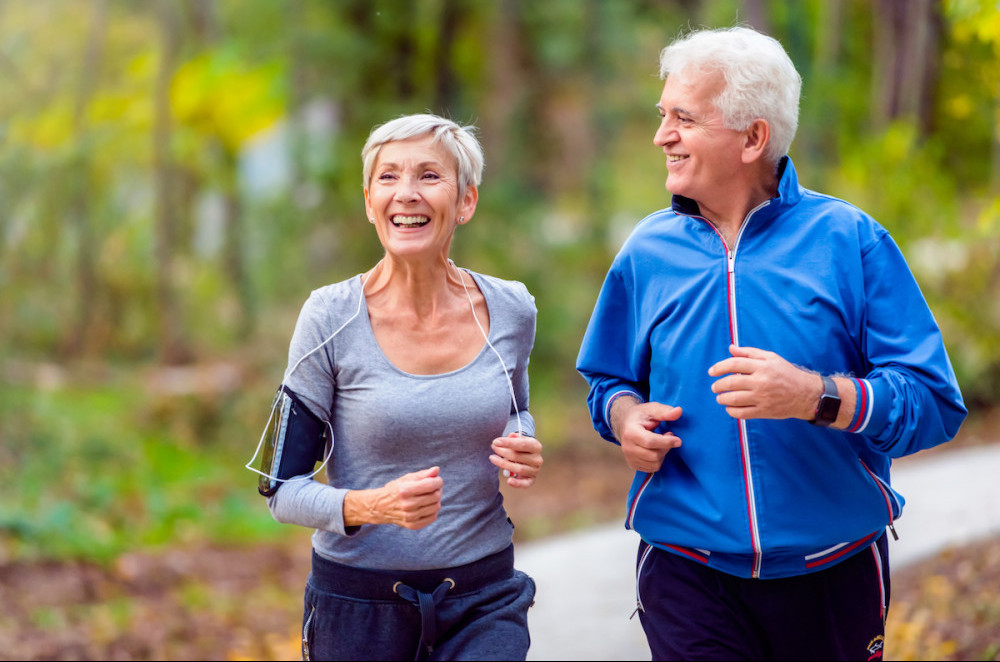THERE ARE MANY POSITIVE IMPACTS
Regular physical exercise and related activity can improve our mental well-being in the many ways shown below. Regular, consistent activity is the key.
- Release of endorphins. Endorphins are natural mood elevators and they are triggered by exercise. A feeling of happiness and euphoria is created, which can help reduce symptoms of depression and anxiety. A “runner’s high” is well known.
- Stress reduction. Physical activity helps our bodies manage and reduce the production of stress hormones, such as cortisol. It helps to relax muscles and relieve tension, which calms our minds.
- Improved sleep. Regular exercise can lead to better sleep quality and duration. Sleep is essential for maintaining mental health and those who exercise often report falling asleep more easily and more deeply.
- Enhanced self-esteem. Achieving fitness goals can boost our self-esteem and self-confidence.
- Increased brain function. Exercise can improve our memory and cognitive function. Blood flow to the brain is enhanced, which gives a boost to our concentration and overall mental clarity.
- Social interaction. Many forms of exercise – team sports or group fitness classes – give us opportunities to connect with others and combat loneliness.

- Mood regulation. Physical activity improves our brain’s ability to manage and respond to stress. This can have a protective effect against mood disorders, like depression or bipolar disorder.
- Reduction of symptoms in mental health conditions. Physical fitness is often used as an adjunct therapy in the treatment of depression, anxiety and schizophrenia.
- Neurotransmitter regulation. Physical exercise can maintain the balance of neurotransmitters in our brains, such as serotonin and dopamine (which play crucial roles in regulating our moods and emotions).
- Mind-body connection. Engaging in physical activity, especially in competitive sports, often requires mindfulness and concentration. Mindfulness can improve our emotional well-being. In my experience in tennis tournaments, I was usually on “automatic pilot”, but there were times when I needed to concentrate more deeply.
- Coping mechanism. With physical fitness, we are better able to cope with life’s challenges. Exercise is a healthy way to do this, while substance abuse is anything but.
DON’T BE ONE OF THESE

Physical fitness evolves largely from goal setting and also from what activities give us the most pleasure. The goal setting is especially important when we choose activities that may be less than pleasurable. For example, weight lifting may require special motivation, as may the prospect of running several miles. We love the benefits, but may at times be hesitant to get started. Goal setting will keep us on track. Goals must be SMART, or:
- Specific
- Measurable
- Achievable
- Realistic
- Time-based
Making a vow to “try to lose weight next year” is not a goal. A goal is to lose 3 pounds this month, with specific planning of exercise routines and meals – and daily record keeping.
It is quite helpful if we choose an activity that gives us pleasure. I played tennis for many years and never thought of this as a means to lose weight or get in shape. I was focused on the competitive aspect and improvement of my strokes.
Salma Hayek had an attitude about physical exercise that may be considered unusual, especially for someone who stays in great shape. She only did what she felt like doing. She loved to dance, to walk her dogs and to swim in the ocean. She also would get on a treadmill, but dance on the treadmill. She would lift dumbbells at times, but not if she felt like having a beer. Her results justify her methods.
EQUIPMENT
Workout equipment is nice to have at home, even if we also go to public gyms. I like to finish my workouts before breakfast in the mornings. My preference is to do resistance workouts and treadmill walks one day and strictly treadmill work the next. I do planks every day. In warm weather, I like to walk outside.
Others may like to go outside for long walks or runs. Or to play a competitive sport. Or to participate in an aerobic dance class.
Below will be some equipment pieces that I use and find easy to manage at home. Amazon is the source. As an Amazon associate, I may use their links within my articles and earn from purchases made from the links. Each link will show price information, product details, reviews and access to similar items.
Nordic Track treadmill – this model is not the most expensive, but has held up well for me with daily use.

Teeter inversion table – I used this for sciatic pain relief, with much success. It felt great to suspend myself upside down.

Resistance bands with handles – I have used these for years. In my opinion, the best value for a complete workout.

Loop bands – I use these for physical therapy and for light workouts. Less than $12

Adjustable dumbbells – I still use these

Light dumbbells – for beginners

Push-up board – I use this to get a deeper push-up and to be able to engage different muscle groups

FINAL THOUGHTS
The connection with mental health is a benefit of physical exercise that may be underestimated. It is certainly real.
Choose an activity that you enjoy or one that you have the discipline to stick with, though the enjoyment may only come when you are finished with it.
Please choose a lifestyle of regular physical exercise. You will never regret that choice!
Leave me any comments or questions in the “Comments” section below. Or email me, richard@myworkoutathome.com.
Let’s stay motivated!